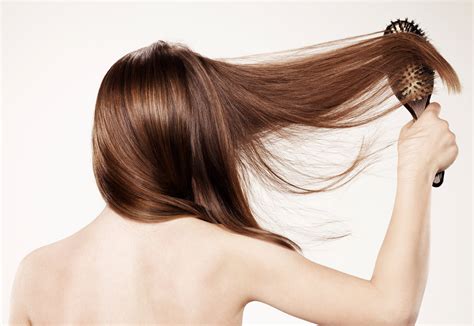Understanding Fine Hair and Its Weave Needs
Fine hair, characterized by its delicate strands and low density, presents unique challenges when it comes to weaving. The right weave can elevate fine hair, adding volume, length, and desired texture. However, choosing the wrong weave can exacerbate existing issues, leading to breakage, shedding, and scalp irritation.

According to the American Academy of Dermatology, approximately 50% of the population has fine hair, highlighting the prevalence and need for tailored weave solutions. This guide delves into the specific wants and needs of individuals with fine hair and explores the best weaves to address their specific pain points.
Types of Weaves for Fine Hair
Weaves for fine hair can be broadly categorized into three main types:
1. Clip-In Weaves:
- Temporary and versatile
- Easy to apply and remove
- Ideal for adding volume and length without commitment
- Can be made from human hair or synthetic materials
2. Tape-In Weaves:
- Semi-permanent and requires professional application
- Bonds to natural hair using medical-grade adhesive
- Provides natural volume and length without damage
- Can last up to 6-8 weeks
3. Sew-In Weaves:
- Permanent and requires professional installation
- Natural hair is braided and the weave is sewn onto the braids
- Creates fullness and length, but can be more time-consuming and costly
Choosing the Best Weave for You
Selecting the best weave for fine hair involves considering several factors:
- Hair texture: Human hair weaves are similar in texture to natural hair, offering a natural blend. Alternatively, synthetic weaves are durable and budget-friendly.
- Lifestyle: Temporary weaves are ideal for occasional use, while semi-permanent or permanent weaves provide long-term solutions.
- Budget: Weaves vary in cost, with human hair weaves being more expensive than synthetic options.
- Hair health: Certain weaves may be gentler on fine hair, minimizing breakage and shedding.
- Desired style: Different weaves can create various looks, from subtle volume to dramatic length.
Table 1: Pros and Cons of Weave Types for Fine Hair
| Weave Type | Pros | Cons |
|---|---|---|
| Clip-In | Non-damaging, versatile, easy to apply | Limited length and volume, shorter lifespan |
| Tape-In | Semi-permanent, natural-looking, gentle on hair | Requires professional application, can be uncomfortable for some |
| Sew-In | Long-lasting, customizable, maximum volume | Permanent, time-consuming to install, potential for breakage with improper maintenance |
Choosing the Right Weave for Your Fine Hair Needs
For Volume and Length without Damage:
- Clip-In Weaves: Offer instant transformation while minimizing breakage and shedding.
For Longer-Term Volume and Length:
- Tape-In Weaves: Provide natural fullness and length with minimal damage, lasting for several weeks.
- Sew-In Weaves: Create maximum volume and length, but require professional installation and maintenance.
For Fine Hair with Thinning Concerns:
- Human Hair Weaves: Blend seamlessly with natural hair, providing thickness and coverage without adding excessive weight.
- Halo Extensions: Non-committal, low-maintenance option that adds volume and coverage to the top of the head.
Table 2: Weave Options for Different Fine Hair Types
| Fine Hair Type | Recommended Weaves |
|---|---|
| Straight and silky | Clip-In, Tape-In |
| Fine and wavy | Clip-In, Tape-In, Sew-In (braided) |
| Fine and curly | Sew-In (micro-link or beaded) |
Installation and Maintenance Tips for Fine Hair Weaves
- Always consult a professional stylist for proper weave installation.
- Use high-quality hair extensions made from real human hair or synthetic fibers that mimic natural hair.
- Wash the weave gently with sulfate-free shampoo and conditioner.
- Avoid over-brushing or excessive manipulation to minimize shedding.
- Apply a hair mask or leave-in conditioner regularly to keep extensions moisturized.
- Remove the weave promptly when desired or if it becomes damaged to prevent hair loss.
Table 3: Maintenance Schedule for Weaves on Fine Hair
| Maintenance Task | Frequency |
|---|---|
| Wash and condition | Once or twice a week |
| Brush and detangle | Daily or as needed |
| Apply hair mask or leave-in conditioner | Weekly or every other week |
| Touch-up installation | Every 4-8 weeks for semi-permanent weaves |
| Remove weave | Professionally, when desired or damaged |
Expert Insights on Weaving Fine Hair
“For fine hair, less is more. Opt for clip-in weaves or halos that add a touch of fullness without weighing hair down.” – Sarah Potempa, celebrity stylist
“Microbead extensions are a great option for fine hair. They’re lightweight and secure, minimizing hair damage.” – Lacy Redway, hair extension expert
“Always consult a certified professional for weave installation and maintenance to ensure hair health and prevent damage.” – National Hairdressers Association
Table 4: Tips for Minimizing Hair Damage from Weaves
| Tip | Purpose |
|---|---|
| Choose lightweight weaves | Reduces strain on natural hair |
| Avoid excessive tension | Prevents breakage at the roots |
| Use a proper weave brush | Ensures gentle detangling |
| Limit heat styling | Protects extensions from damage |
| Get regular trims | Prevents split ends and shedding |
Conclusion
Weaving fine hair requires careful consideration and the right techniques to enhance natural hair without causing damage. By understanding the specific needs of fine hair and choosing the best weave for your lifestyle and hair type, you can achieve the desired volume, length, and style without compromising hair health. Remember to follow proper installation and maintenance practices, seek professional advice, and experiment with different weave options until you find the perfect match for your fine hair.
